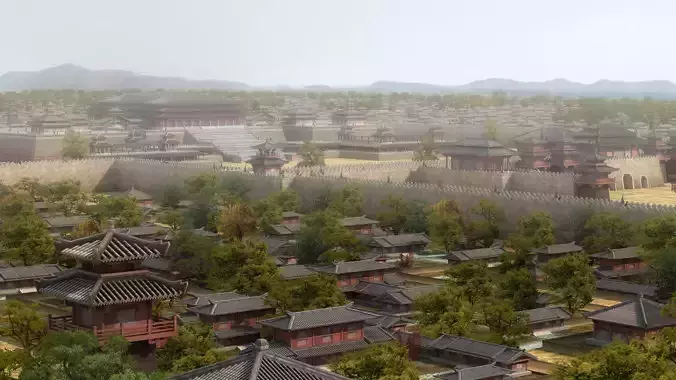1/6
Weiyang Palace, the main palace of the Western Han Empire, was built in the seventh year of Emperor Gaozu of Han (200 BC) under the supervision of Liu Bang's high-ranking official Xiao He. It was built on the basis of Qin Zhangtai and is located on the highest southwest corner of Longshouyuan in Chang'an City. It is also known as the Western Palace because it is situated west of Anmen Street in Chang'an City. After the construction of the Weiyang Palace, emperors of the Western Han Dynasty lived here and became the center of political orders for more than 200 years. Therefore, in the poetry of later generations, the Weiyang Palace has become synonymous with the Han Palace. After the Western Han Dynasty, the Weiyang Palace remained the administrative center of several dynasties, including the Xinmang, Western Jin, Former Zhao, Former Qin, Later Qin, Western Wei, and Northern Zhou. During the Sui and Tang dynasties, it was also designated as a part of the Forbidden Garden and has survived for 1041 years. It is the most widely used and longest lasting imperial palace in Chinese history. The Weiyang Palace is the starting point of the Silk Road in the east. In the second year of Jianyuan (139 BC), Zhang Qian received the decree of Emperor Wu of Han from the Weiyang Palace to go on an envoy to the Western Regions, thus embarking on a magnificent journey of digging the air, showcasing the development level of Eastern civilization located at the eastern end of the Silk Road, and witnessing the dual starting point value of time and space in the development process of the Han Chang'an City on the Silk Road. The Weiyang Palace is one of the largest palace architectural complexes in ancient China, with a total area of about 5 square kilometers. It consists of pavilions, towers, and pavilions, as well as mountains, rivers, and ponds. Its architectural form has deeply influenced the later palace city architecture, laying the foundation for the basic pattern of palace city architecture in China for over two thousand years.Model making software: 3ds Max 2014 Rendering software: vray3.60.03 for 3dmax2014 If you have any questions, write me: wjjmsn2020@gmail.com。Note: The trees in the scene are patch transparent textures, not 3D models.
REVIEWS & COMMENTS
accuracy, and usability.






